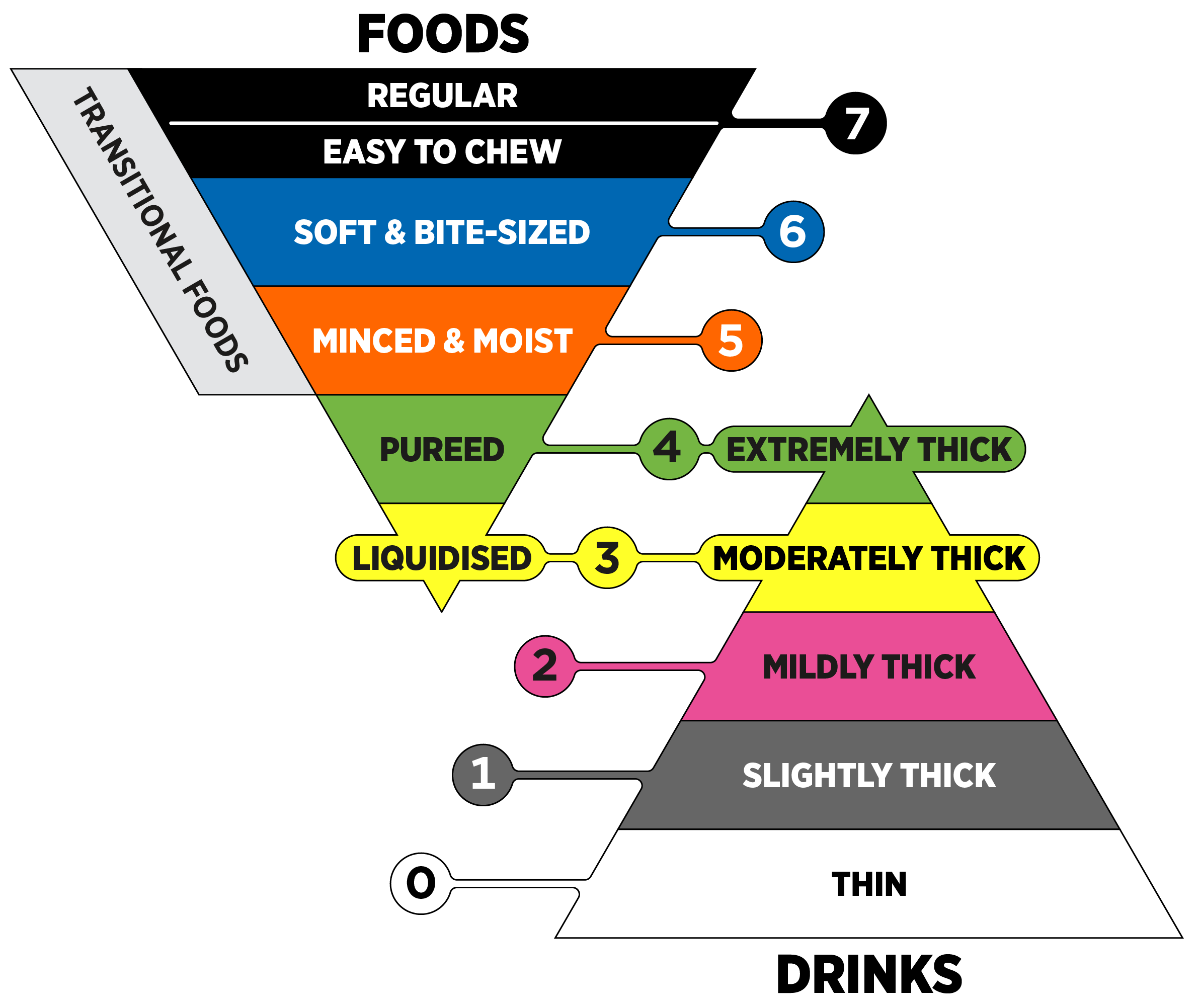Understanding IDDSI: A Guide to Safer Eating for Everyone

When it comes to food, most of us don’t think twice about chewing or swallowing. But for millions of people worldwide, those everyday actions are more complicated. And could even potentially be dangerous.
That’s where IDDSI comes in.
The International Dysphagia Diet Standardisation Initiative (IDDSI) is a global framework that standardizes the way foods and drinks are prepared for people with swallowing difficulties (dysphagia).
Whether you’re a caregiver, a healthcare professional, or someone exploring nutrition options for a loved one, understanding IDDSI can help you see why it’s so important and how it makes mealtimes safer, easier, and more dignified.
Why Was IDDSI Established?
Before IDDSI, there was no single, consistent way to describe texture-modified foods or thickened drinks. Every hospital, senior care home, or rehab center would be using different terminology. Terms like “soft diet,” “mechanical soft,” or “nectar-thick” drinks could mean different things at different facilities.
This lack of consistency created risks.
A food texture that seemed safe in one facility might not meet the same safety standards in another. Patients traveling between hospitals, or even across countries, could end up with unsafe meals.
IDDSI was established to eliminate that confusion. Its goal: a standardized global language to ensure that no matter where a person is, their diet level means the same thing, helping reduce choking risks, aspiration, and hospital readmissions.
Why Is IDDSI Important?
At its core, IDDSI is about safety, dignity, and quality of life. People with swallowing difficulties—whether due to stroke, Parkinson’s disease, dementia, head injuries, or other conditions—need food and drink that matches their abilities.
Too thin, and liquid may go down the wrong way.
Too thick, it becomes hard to swallow.
By following IDDSI levels, caregivers and foodservice providers can:
- Reduce risks of choking and aspiration pneumonia
- Ensure consistent care across facilities and countries
- Give individuals more confidence and enjoyment during meals
- Support healthcare teams with clear, universal communication
When Was IDDSI Developed and Implemented?
IDDSI began in 2013, when an international group of healthcare professionals, researchers, and food experts came together to create a standardized diet framework. After years of research, testing, and global consultation, the final framework was released in 2015.
Implementation has been gradual, with many hospitals, senior living communities, and food manufacturers adopting IDDSI standards over the past decade. Today, IDDSI is recognized and used in healthcare systems around the world.
What Are the IDDSI Levels?
The IDDSI framework breaks down food and drink into eight levels, numbered 0–7. Each level describes a specific texture or thickness, tested with simple, practical methods that anyone can use in a kitchen or care setting.
Here’s a quick overview:
- Level 0: Thin Liquids – Regular water, tea, coffee, juices.
- Level 1: Slightly Thick – Thicker than water but still flows easily.
- Level 2: Mildly Thick – Similar to nectar; coats a spoon lightly.
- Level 3: Moderately Thick / Liquidized – Similar to honey; requires some effort to drink
- Level 4: Extremely Thick / Pureed – Thickened liquids or pureed foods that hold their shape.
- Level 5: Minced & Moist – Soft foods, finely minced (pieces less than 4mm), moist, easy to chew.
- Level 6: Soft & Bite-Sized – Tender foods cut into 1.5cm pieces, easy to mash with a fork.
- Level 7: Regular / Easy to Chew – Normal food textures, with a subcategory for softer, easy-to-chew options.

It’s helpful to think of IDDSI in terms of everyday food examples. Here are a few to illustrate:
- Level 0 (Thin): water, tea, broth.
- Level 1 (Slightly Thick): breast milk with thickener, slightly thickened juice.
- Level 2 (Mildly Thick): smoothies, thicker juices.
- Level 3 (Moderately Thick): yogurt drinks, thick shakes.
- Level 4 (Pureed): mashed potatoes with no lumps, pureed soups.
- Level 5 (Minced & Moist): finely minced chicken in sauce, soft scrambled eggs.
- Level 6 (Soft & Bite-Sized): fork-tender fish, well-cooked vegetables cut into small bites.
- Level 7 (Regular): most everyday meals, from sandwiches to pasta.
The IDDSI Diet in Practice
Unlike other fad diets you may hear about, an IDDSI diet isn’t about restriction. It’s about adaptation.
The goal is to provide meals that are safe, nutritious, and enjoyable, no matter what swallowing level a person is on.
In hospitals, long-term care facilities, and even at home, this means adjusting the way food is prepared—blending, thickening, chopping, or cooking differently to achieve the correct texture. With standardized testing methods (like the fork drip test or spoon tilt test), caregivers can confirm that food and drink meet IDDSI standards before serving.
IDDSI: A Global Standard for Safer Eating
Since its launch, IDDSI has been adopted in dozens of countries and endorsed by professional organizations worldwide. Its success comes from its universal design: it’s simple, practical, and flexible, making it usable in hospitals, nursing homes, schools, and even food manufacturing.
For individuals and families, IDDSI represents peace of mind. For professionals, it’s a clear, evidence-based framework that improves safety and consistency.
Kosher Eats and IDDSI
At Kosher Eats, we understand the importance of mealtime. Not only are we coming together for nutrition, but for connection and dignity as well.
That’s why we are proud to be one of the only providers offering certified Kosher and Halal options across every IDDSI level.
Our menus are carefully designed to meet IDDSI standards while delivering variety, taste, and cultural sensitivity. From hospitals and schools to cruise lines and long-term care facilities, we make it easier to serve safe, high-quality meals for everyone.
IDDSI is a global movement that makes eating and drinking safer, more consistent, and more enjoyable for people with swallowing difficulties. Whether you’re a healthcare professional, a caregiver, or simply learning more, understanding IDDSI helps ensure that mealtimes are both safe and satisfying.
Want to learn more about Kosher Eats’ certified IDDSI menus?
Explore our offerings and see how we’re bringing safety, nutrition, and flavor to every plate.
© 2025 by Kosher Eats. Website design and development by 1744 Marketing.
Accessibility | Terms & Conditions | Privacy Policy




